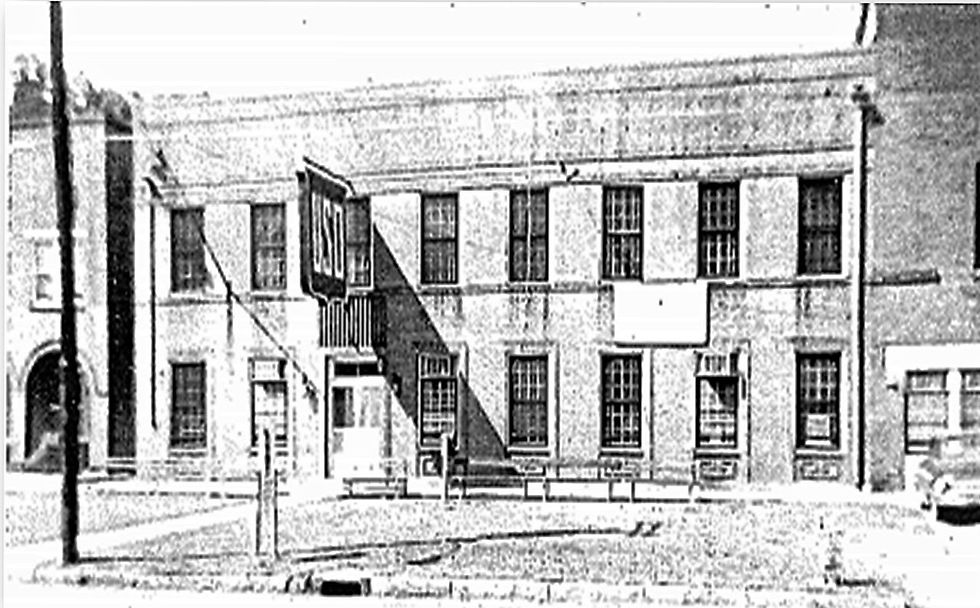Wartime Stories: Fifth Avenue USO, A Home Away from Home for Black Soldiers
- Historic Columbus
- Jul 20, 2023
- 3 min read
SOURCE: Columbus Connections: A Collection of Wartime Stories by Lynn Willoughby (2007).

Fifth Avenue USO
When America entered World War II, President Franklin Roosevelt envisioned a civilian organization that would allow ordinary citizens to show their concern for the troops by creating “homes away from home” for service men and women. These USOs (United Service Organization) could provide a place for soldiers to relax in their off hours, meet other young people, and ward off homesickness. In 1941, the Columbus Chamber of Commerce sought to expand Fort Benning, the Army asked locals to create a USO for both White and Black soldiers, but the need was more extreme for Black soldiers since there were very few places for African Americans to congregate in the days of segregation. E.E. Farley, the only African American in the employ of the Army and Navy Department of the National Council YMCA at the time, brought this need to the attention of Mrs. Lizzie Mae Lunsford (pictured below). She answered the call and donated the entire amount of $15,000 needed to build a fine, new building on Fifth Avenue between Eighth and Ninth Streets for the Black soldiers of the 24th Infantry Regiment and other African American troops based at Ft. Benning.

It would contain offices, canteens, a library, social rooms, and adequate facilities for dances, games, educational programming, and recreational activities sorely needed by the more than 5,000 Black soldiers of the 24th Infantry. The operating funds were furnished by the Columbus Defense Service Committee and the Army and Navy Department of the YMCA. Money for the equipment was raised entirely by the African American community. The groundbreaking ceremonies were made impressive by the attendance of more than 300 soldiers (24th Infantry) and the 24th Infantry band, several thousand white and Black spectators, high ranking military, and city and county officials. Reverend T.W. Smith, a Black minister, was handed the first spade by Col. James M. Locket, commanding officer of the 24th Infantry. Reverend Smith shoveled the first spade of dirt from the site that would house the USO building. In July 1941, the two-story building was dedicated. The Colored Army and Navy YMCA/USO was adjacent to the back of the Pierce Building at 841 5th Avenue. Participating that day were publisher Maynard Ashworth, members of the Columbus Defense Services, H.J. Sims, Secretary of the Army and Navy YMCA; Dr. Benjamin E. Mays, President of Morehouse College; Elizabeth M. Lunsford, Dr. Thomas Brewer, Walter Richards, Rev. W.A. Reid, Pastor of Shady Grove Baptist Church; Lt. Col. Frank Lockhart, Commanding Officer; Dr. R.K. Paschal, Pastor of Friendship Baptist Church; and the 24th Infantry Band.

A.J. McClung and his children, Art and Bunky, stand outside the Fifth Avenue USO.
Gordon Kitchen served as the director, and a young A.J. McClung moved here from a Panama City USO in 1943 to be the program director. McClung planned all the entertainment, a craft he had trained for through a Columbia University program. When Army buses brought the soldiers in from post, a group of young ladies, who served as hostesses waited for them just inside the door. The building was always a lively place where good manners were required, and alcohol forbidden. Just beyond the hostesses, the men stepped up to a long counter where they could buy the best tasting hot dogs around, as well as any number of sundries from sunglasses to cigars. Beyond the counter, comfortable sofas and chairs arranged in conversational groupings beckoned them. Upstairs, well known bands kept the ballroom hopping. Besides the many dances and theme parties held in this room, McClung hosted talent shows, musical programs, and movies here, and a select group of local youth took dance lessons. On the front lawn, McClung hosted wiener roasts and barbecues and sent young people off on hayrides.

Director Gordon Kitchen at left with McClung and a USO chaperone.
When the war ended in 1945, the soldiers who passed through Sand Hill were in fewer numbers. Later, as the troops were integrated, the Black USO became less important, and it was closed down. After serving briefly at another USO in Texas, A.J. McClung returned to Columbus to direct both the Ninth Street and the Brookhaven YMCAs, the latter of which was later renamed in his honor. McClung, the first African American to serve on the Public Safety Board, was instrumental in the 1970 consolidation of the city and county governments. He was elected councilor and mayor pro-tem for the first time since Columbus became a consolidated government in 1971. After Mayor J.R. Allen was killed in a tragic plane crash, McClung was the first African American to serve as mayor in a major Southern city in 1973 (for 52 ½ days). The USO building no longer stands on Fifth Avenue. Although short-lived, it connected a caring community to the many African American soldiers in need of recreation and support while serving far away from home.





Comments